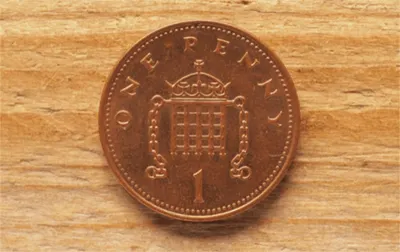Barriers to Creativity
The key to being creative is giving yourself permission to be wrong. We deliberately hold ourselves back by the preconditions, barriers or metaphorical fences that we place on our thinking. In education getting the wrong answer is penalised. In business there is often more than one right answer and it is more important to come up with novel and original solutions. In this post I explore how to identify and challenge limiting beliefs and assumptions.
“Oh, give me land, lots of land under starry skies above
Don't fence me in
Let me ride through the wide-open country that I love
Don't fence me in”
~ Cole Porter (inspired from a poem by Robert Fletcher)
Assumptions
It is said that to assume makes an “ASS out of yoU and ME.”

This is an oversimplification as assumptions are often necessary. They are mental shortcuts. If you had to make sense of the world by deducing everything from first principles every day you wouldn’t be able to function. These will be a result of life experiences, education, upbringing and beliefs.
Assumptions are useful for decision-making. Whenever we encounter a problem the brain searches its memory to find a similar situation. This may be based on a generalisation. That is, taking something specific and applying it more broadly in a wider context.
If you aren’t able to refer back to a previous situation or general case you feel uncomfortable and have no frame of reference. Fear of the unknown has been defined by researchers as a fear caused by a perceived lack of information. This is why trying something for the first time is often accompanied by anxiety.
If you want to come up with a new solution you need to be careful not to impose inappropriate assumptions. Let me give you an example.
“Why are 2023 pennies worth more than 1994 pennies?”
Try to answer before I reveal the solution below. It has nothing to with metallurgical content or rarity for coin collectors. What assumptions have you made?

I suspect your brain said something like, “Ah ha - I have seen 2023 and 1994 before. What happened in these years?” It made an inappropriate assumption. I never said they were years. Two-thousand-and-twenty-three pennies is £20.23 and one-thousand-nine-hundred-and-ninety-four pennies is £19.94 so of course there is a 29 pence difference and 2023 are worth more.
When you make inappropriate assumptions, you can distort your perception of reality, which can lead to irrational decisions. We can get things wrong by applying assumptions in inappropriate circumstances, basing expectations on bad data, or making assumptions based on wrong thinking. It is especially dangerous to borrow an idea from one discipline and apply it in a context it was never proposed to be used.
Feeding electricity into a quartz crystal makes it vibrate (resonate) through the reverse piezoelectric effect. Quartz vibrates exactly 32768 times a second. This is the basic principle behind a quartz watch. The circuit counts the oscillations and turns each 32768 vibrations into one electric pulse. Different crystal structures have different resonant frequencies. Crystal healing takes the idea of resonance and says crystals enable positive, healing energy to flow into the body as negative, disease-causing energy flows out. Scientifically speaking, there is no evidence that crystal healing can be used to cure diseases, because diseases have never been found to be the result of a so-called energy flow in the body. There are many similar pseudoscience claims and conspiracy theories based on accepting something as truth, although you have no proof. You are seeing through the distorting lens of dogma or belief.

How do Mind Maps Help?
You can create a ‘Brain Dump’ Mind Map. Tony Buzan didn’t like this phrase as he said the brain is exquisitely beautiful and a dump is ugly. However, it is an apt term for clearing your mind. As the intention is to capture information, not to memorise it, you can create as many branches as you like. Work quickly without worrying too much about style. Start with the problem or situation represented in the centre by an image. Jot down keywords on branches for every related assumption you can think of and, where possible, consequences. Don’t judge them at this stage. As you work through the process you’ll most likely uncover unconscious bias and beliefs you’d never thought of challenging. Once you have a full Mind Map you can evaluate. The aim is not to reject every assumption. It is just to reveal that they exist and choose to temporarily ignore some so you can gain a new perspective.
Misdirection
Misdirection uses our assumptions against us. This is often how magicians create illusions and sleight of hand in card magic. You believe them when they say they have two cards in their hand or a cabinet is just a normal box.

Politicians are excellent in directing a conversation to the answer they want to give regardless of whether it answers the original question or not. Analysis shows only 47 per cent of all questions posed within the context of a political interview are given a concrete answer.
Another riddle which illustrates how misdirection can lead you to a wrong conclusion:
“Archie and Ben were professional golfers and keen rivals. One day during a game, they had each scored 30 when Ben hit a bad shot. Archie immediately added 10 to his own score. Archie then hit a good shot and won the game. Why?”
Try to answer before I reveal the solution below.

The sneaky part of this question is the extra information that Archie and Ben are golfers. If you ignore that fact and read the rest of the question you can see there is no mention that they’re actually playing golf. The scoring makes sense because they were playing tennis. At 30-all Ben hit a shot out. Archie then served an ace to win the game and match.
Beware misdirection from others and question your own assumptions. Not all will be invalid and you can be flexible playing with “what if” thinking. My father used to describe me as “contrary” (perversely inclined to disagree) but I prefer to say I have an enquiring mind. How about you?
